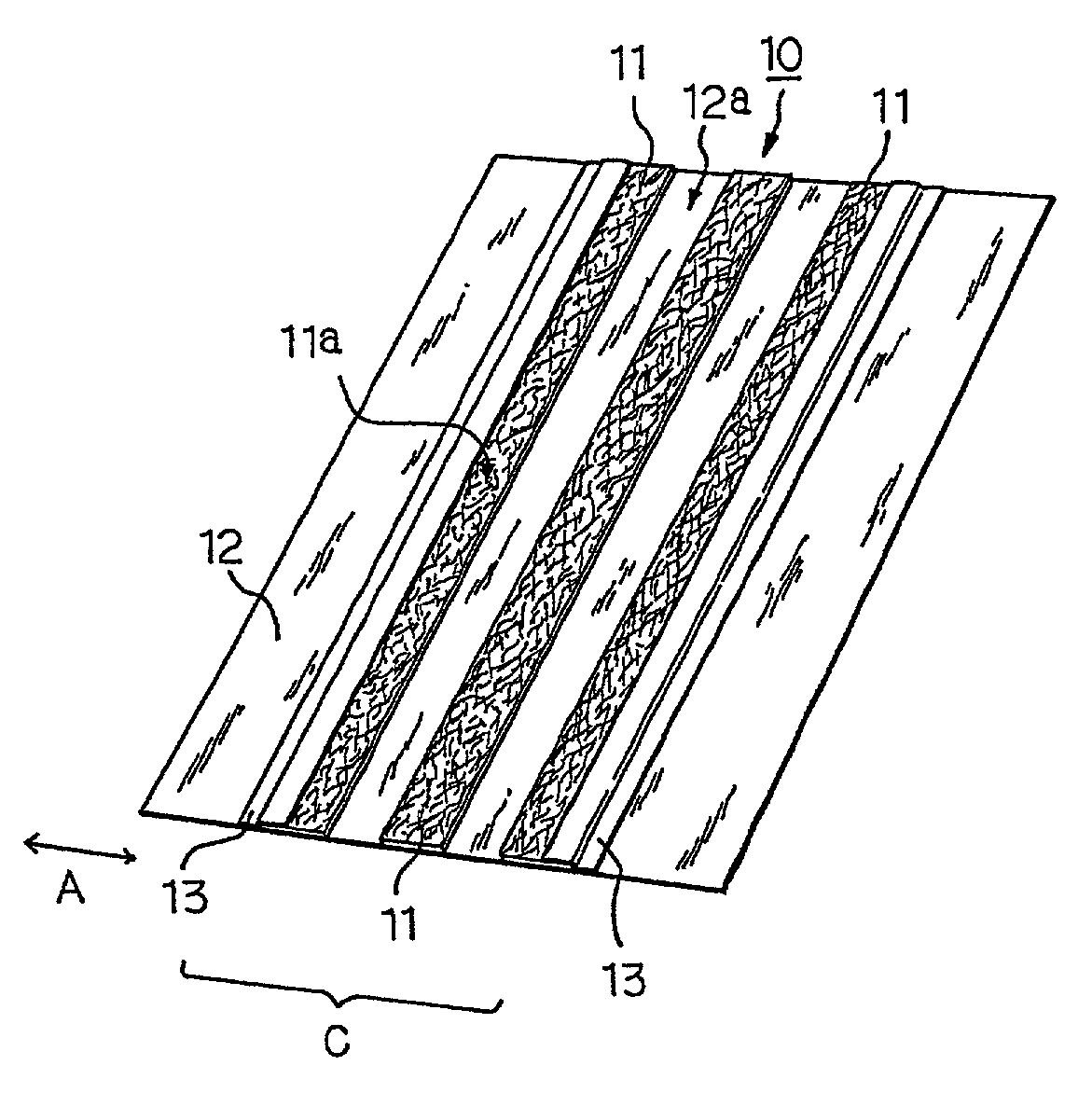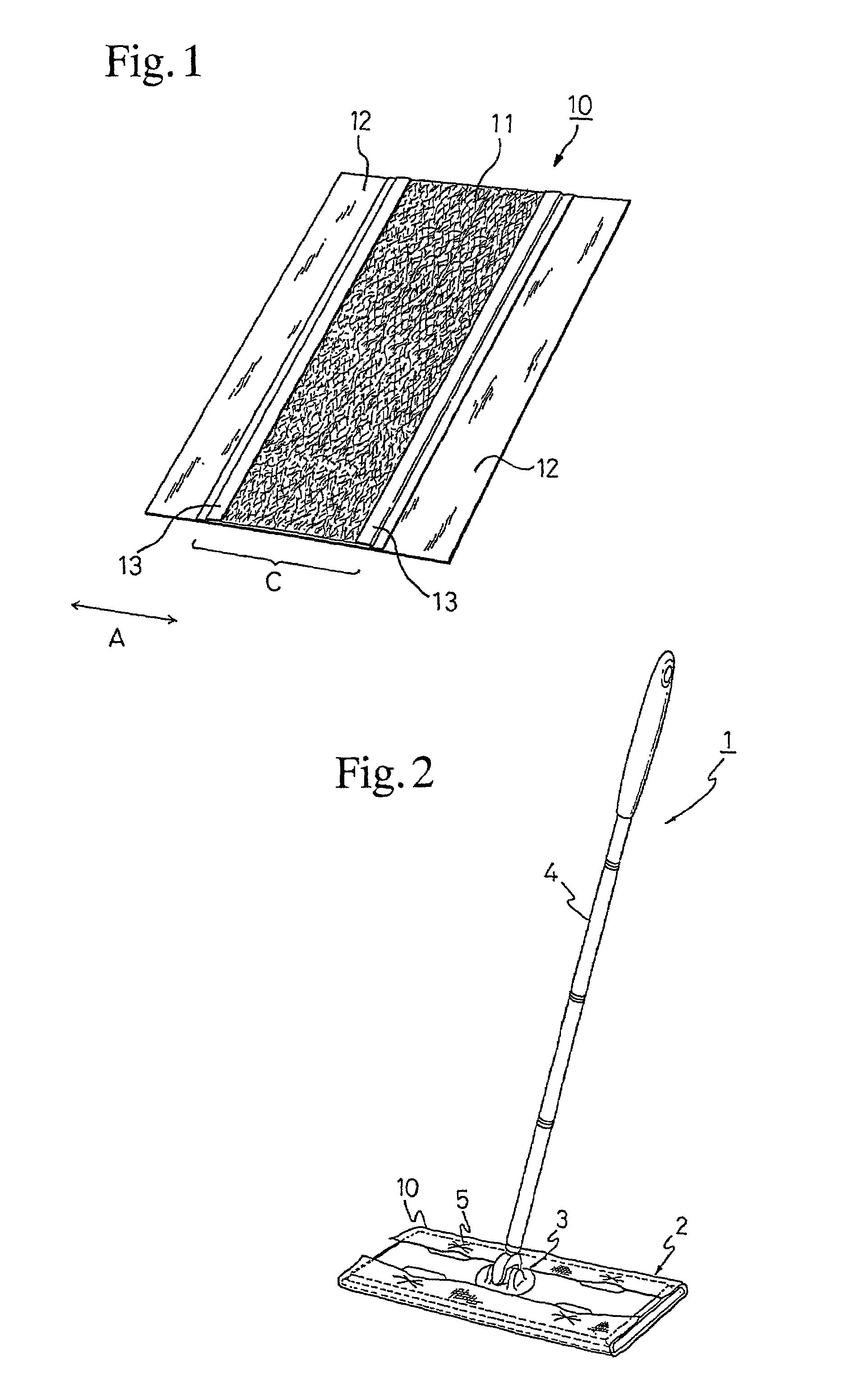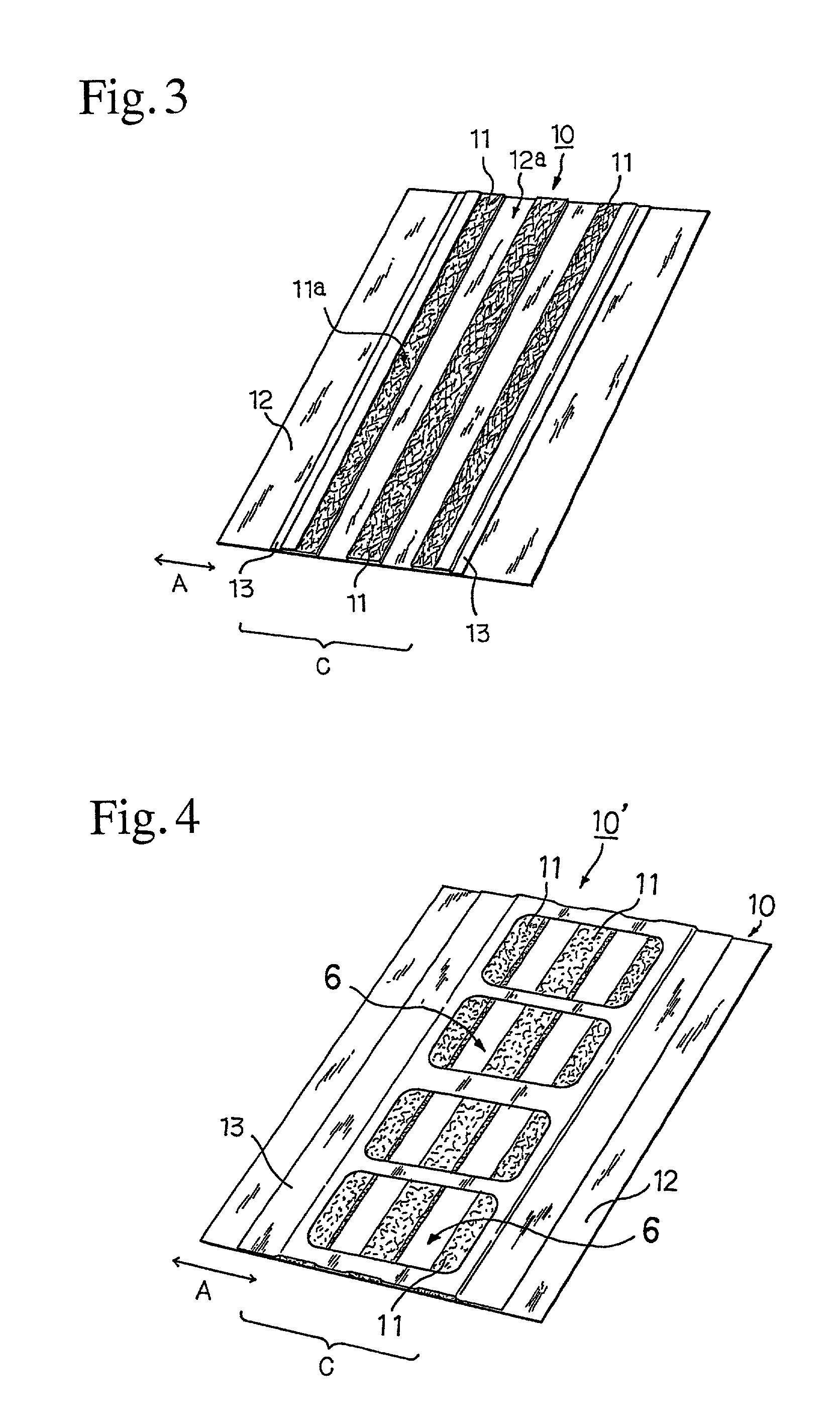Cleaning Sheet
a technology of cleaning sheets and spherical sheets, applied in the field of cleaning sheets, can solve the problems of inability to scrape and catch up fibrous dust such as hairs entangled with carpets, and the cleaning sheets used in combination with the fitting sheets are spun-laced non-woven, and are not suitable for cleaning piled surfaces
- Summary
- Abstract
- Description
- Claims
- Application Information
AI Technical Summary
Benefits of technology
Problems solved by technology
Method used
Image
Examples
example 1
[0071]A mixture of 90% of very thick core / sheath type conjugate fiber made of polypropylene as a core and polyethylene as a sheath and having a length of 5 mm and a fineness of 72 dtex (65 denier) and 10% of core / sheath type conjugate fiber made of polypropylene as a core and polyethylene as a sheath and having a length of 5 mm and a fineness of 1.7 dtex (1.5 denier) was accumulated by an air-laying method on spun-bonded nonwoven fabric of core / sheath type conjugate fiber made of polypropylene as a core and polyethylene as a sheath and having a basis weight of 20 g / m2 to form a web having a basis weight of 50 g / m2. Hot air was blown to thermally bond the fibers constituting the web to one another and also to the spun-bonded nonwoven fabric to obtain air-laid nonwoven fabric having a basis weight of 70 g / m2. The air-laid nonwoven fabric was cut to a width of 100 mm in the cross direction of the stock and a length of 255 mm in the machine direction of the stock.
[0072]The cut sheet of ...
example 2
[0075]A cleaning sheet was prepared in the same manner as in Example 1, except for replacing the polypropylene film having openings with three strips of an about 60 μm thick polypropylene film (static friction coefficient: 0.52) each having a width of 15 mm and a length of 255 mm as follows. One of the long side edges of the air-laid nonwoven fabric (100 mm by 255 mm) being taken as a base (0 mm), the first strip was stuck on the area 0 to 15 mm wide of the base, the second one on the area 42.5 to 57.5 mm wide of the base, and the third one on the area 85 to 100 mm wide of the base.
example 3
[0076]A mixture of 90% of very thick core / sheath type conjugate fiber made of polypropylene as a core and polyethylene as a sheath and having a length of 5 mm and a fineness of 72 dtex (65 denier) and 10% of core / sheath type conjugate fiber made of polypropylene as a core and polyethylene as a sheath and having a length of 5 mm and a fineness of 1.7 dtex (1.5 denier) was accumulated by an air-laying method on spun-bonded nonwoven fabric of core / sheath type conjugate fiber made of polypropylene as a core and polyethylene as a sheath and having a basis weight of 20 g / m2 to form a web having a basis weight of 50 g / m2. Hot air was blown to thermally bond the fibers constituting the web to one another and also to the spun-bonded nonwoven fabric to obtain air-laid nonwoven fabric having a basis weight of 70 g / m2.
[0077]Two strips 25 mm wide and 255 mm long (hereinafter referred to as first strips) and one strip 20 mm wide and 255 mm long (hereinafter referred to as second strip) were cut o...
PUM
| Property | Measurement | Unit |
|---|---|---|
| Fraction | aaaaa | aaaaa |
| Ratio | aaaaa | aaaaa |
| Area | aaaaa | aaaaa |
Abstract
Description
Claims
Application Information
 Login to View More
Login to View More - R&D
- Intellectual Property
- Life Sciences
- Materials
- Tech Scout
- Unparalleled Data Quality
- Higher Quality Content
- 60% Fewer Hallucinations
Browse by: Latest US Patents, China's latest patents, Technical Efficacy Thesaurus, Application Domain, Technology Topic, Popular Technical Reports.
© 2025 PatSnap. All rights reserved.Legal|Privacy policy|Modern Slavery Act Transparency Statement|Sitemap|About US| Contact US: help@patsnap.com



